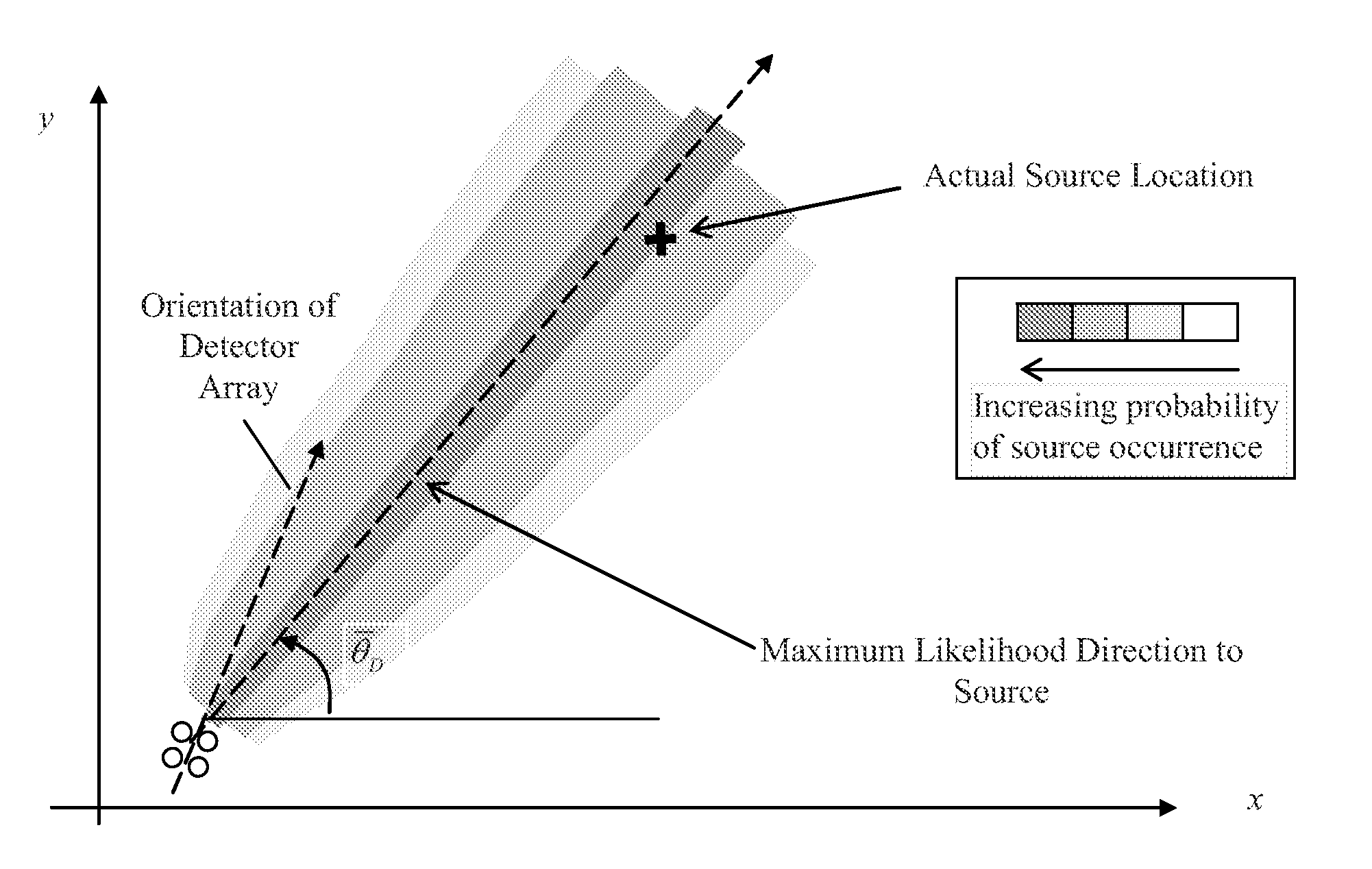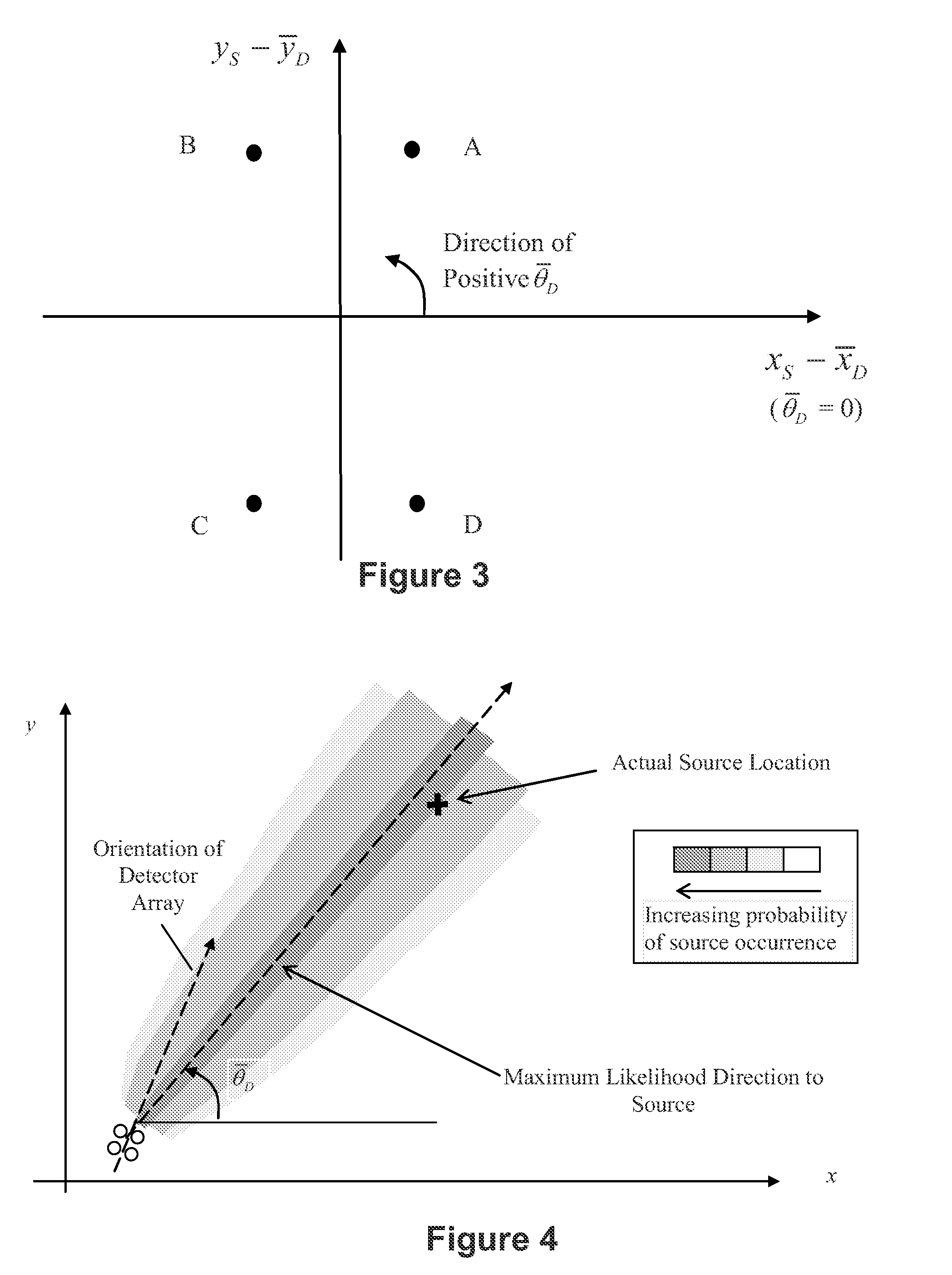Source localization using multiple units of a tight-pitched detector array
a detector array and source technology, applied in the field of systems and methods for detecting radiation sources, can solve the problems of inability to take advantage of choke points to locate radiation sources, inability to estimate the position of radiation sources (x,y), and inability to take advantage of choke points. to achieve the effect of increasing the signal-to-noise ratio
- Summary
- Abstract
- Description
- Claims
- Application Information
AI Technical Summary
Benefits of technology
Problems solved by technology
Method used
Image
Examples
Embodiment Construction
[0030]According to an embodiment, a directional radiation detector obtains source directionality by either placing an absorbing medium between detector elements, which are arranged in an array, or by positioning the individual detector elements such that the view of the source by each detector is partially occluded. The degree of occlusion is a function of the orientation of the array with respect to the source. Processing of count rate data associated with the detector unit relates relative count rates in individual detector elements with the direction of the incoming radiation. Processing of count rate data may be accomplished in near real-time to achieve efficient detection and tracking of a radiation source within an environment. The relationship between count rate and array orientation needed to infer source direction may be established a priori, for example, in the laboratory or through simulations.
[0031]Various embodiments of the present systems and methods incorporate an occ...
PUM
 Login to View More
Login to View More Abstract
Description
Claims
Application Information
 Login to View More
Login to View More - R&D
- Intellectual Property
- Life Sciences
- Materials
- Tech Scout
- Unparalleled Data Quality
- Higher Quality Content
- 60% Fewer Hallucinations
Browse by: Latest US Patents, China's latest patents, Technical Efficacy Thesaurus, Application Domain, Technology Topic, Popular Technical Reports.
© 2025 PatSnap. All rights reserved.Legal|Privacy policy|Modern Slavery Act Transparency Statement|Sitemap|About US| Contact US: help@patsnap.com



